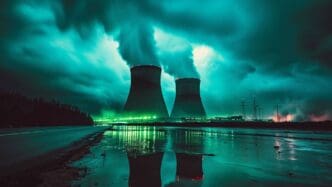Table of Contents Show
U.S. Uranium Reserves: A Complex Landscape
The United States, despite its historical prominence in nuclear energy, faces a multifaceted situation regarding its uranium supply. While possessing substantial uranium reserves, the nation grapples with economic, geopolitical, and environmental factors that influence its domestic uranium production and reliance on imports.
Current State of U.S. Uranium Reserves
The U.S. holds a significant amount of uranium reserves, estimated to be around 1.2 million tons. These reserves are primarily located in the western states, with Wyoming, New Mexico, and Utah holding the largest deposits. However, only a small fraction of these reserves are considered economically viable for extraction under current market conditions and technological constraints.
Challenges in Domestic Uranium Production
Several challenges hinder the expansion of domestic uranium production in the U.S.:
- **Economic Factors**: The global uranium market has experienced price volatility in recent years, making it difficult for U.S. uranium producers to compete with lower-cost producers from other countries, such as Kazakhstan and Canada.
- **Environmental Concerns**: Uranium mining and processing raise environmental concerns, including potential groundwater contamination and the generation of radioactive waste. Stringent regulations and permitting processes add to the complexity and cost of uranium production.
- **Geopolitical Considerations**: The U.S. relies heavily on imported uranium, primarily from allies like Canada and Australia. However, geopolitical tensions and supply chain disruptions can pose risks to the security of uranium supply.
Government Initiatives and Policies
The U.S. government has implemented various initiatives and policies to address the challenges in the domestic uranium sector:
- **Strategic Uranium Reserve**: The establishment of a strategic uranium reserve aims to ensure a stable supply of uranium for national security and energy needs.
- **Research and Development**: Investments in research and development focus on improving uranium extraction technologies, reducing environmental impacts, and exploring alternative sources of uranium.
- **Support for Domestic Producers**: Government programs provide financial and technical assistance to domestic uranium producers to enhance their competitiveness.
The Future of U.S. Uranium Supply
The future of U.S. uranium supply remains uncertain and depends on several factors, including:
- **Global Uranium Market**: Fluctuations in global uranium prices and demand will significantly influence the economic viability of domestic uranium production.
- **Technological Advancements**: Breakthroughs in extraction technologies and environmental mitigation measures could make domestic uranium production more sustainable and cost-effective.
- **Energy Policy**: The U.S. government’s energy policies and priorities regarding nuclear power will play a crucial role in shaping the future of the uranium sector.
Conclusion
The U.S. possesses substantial uranium reserves but faces a complex set of challenges in utilizing its domestic uranium resources. Balancing economic, environmental, and geopolitical considerations is crucial for ensuring a secure and sustainable uranium supply for the nation’s energy needs. Government initiatives, technological advancements, and a supportive policy environment will be essential in shaping the future of the U.S. uranium sector.











